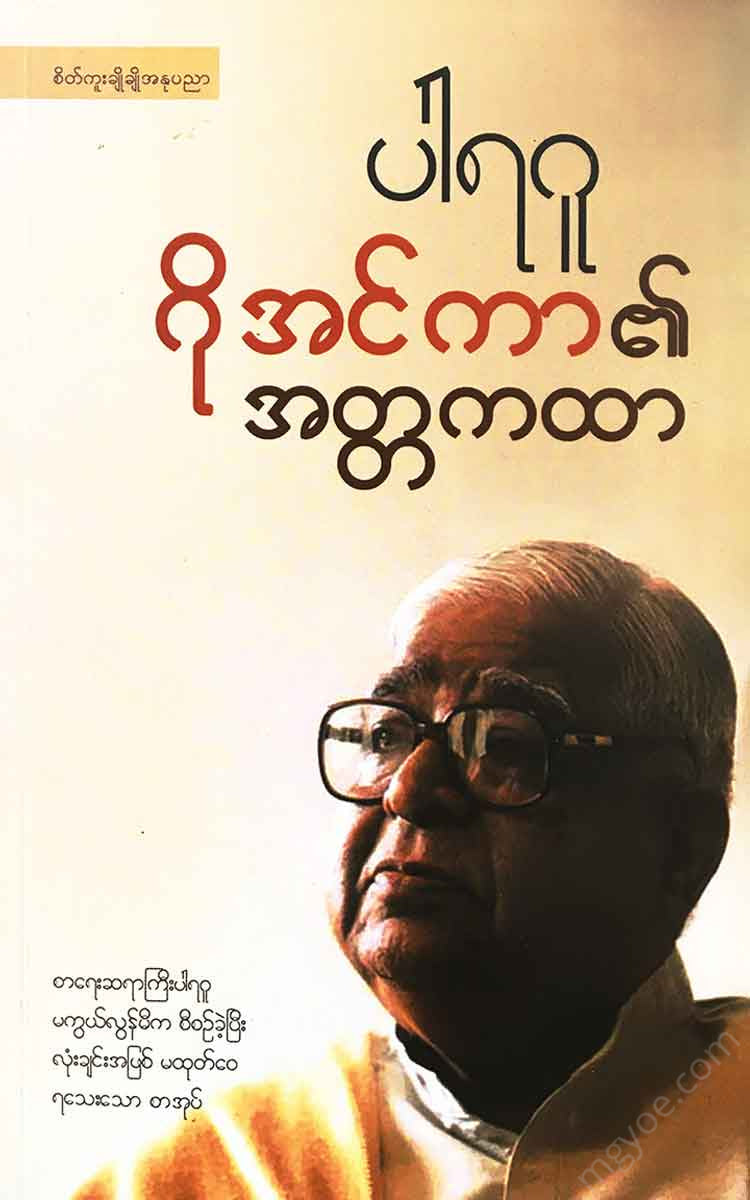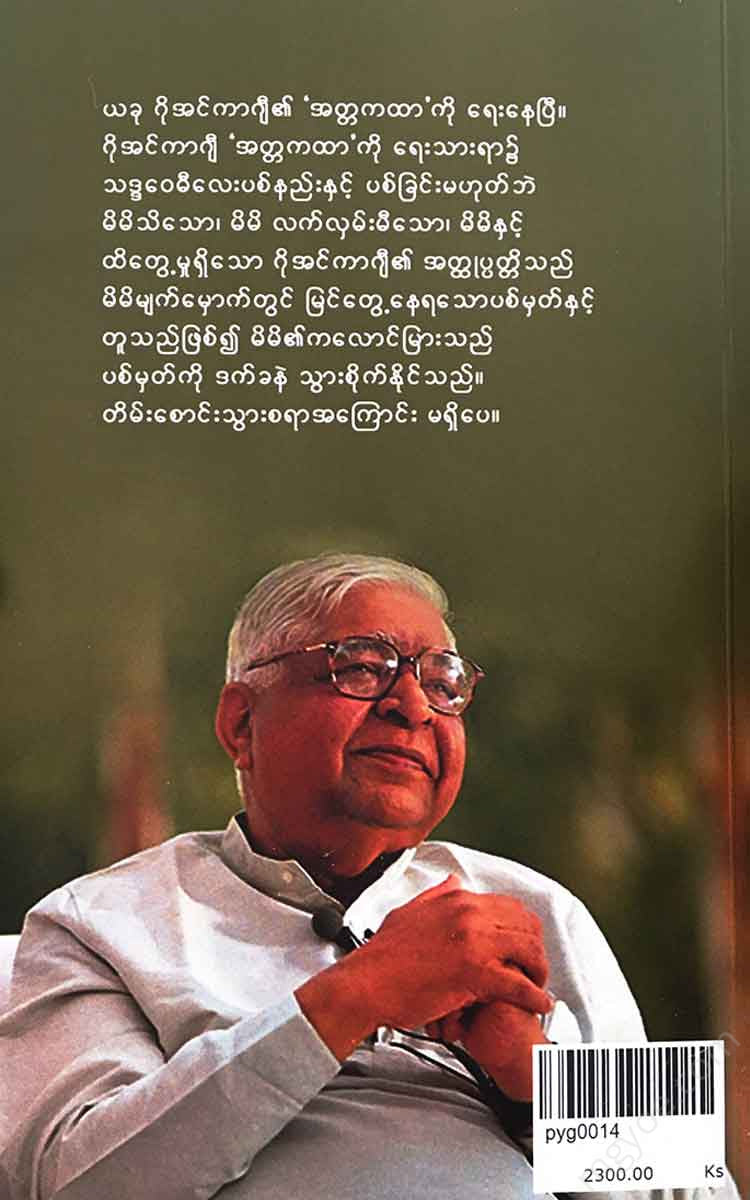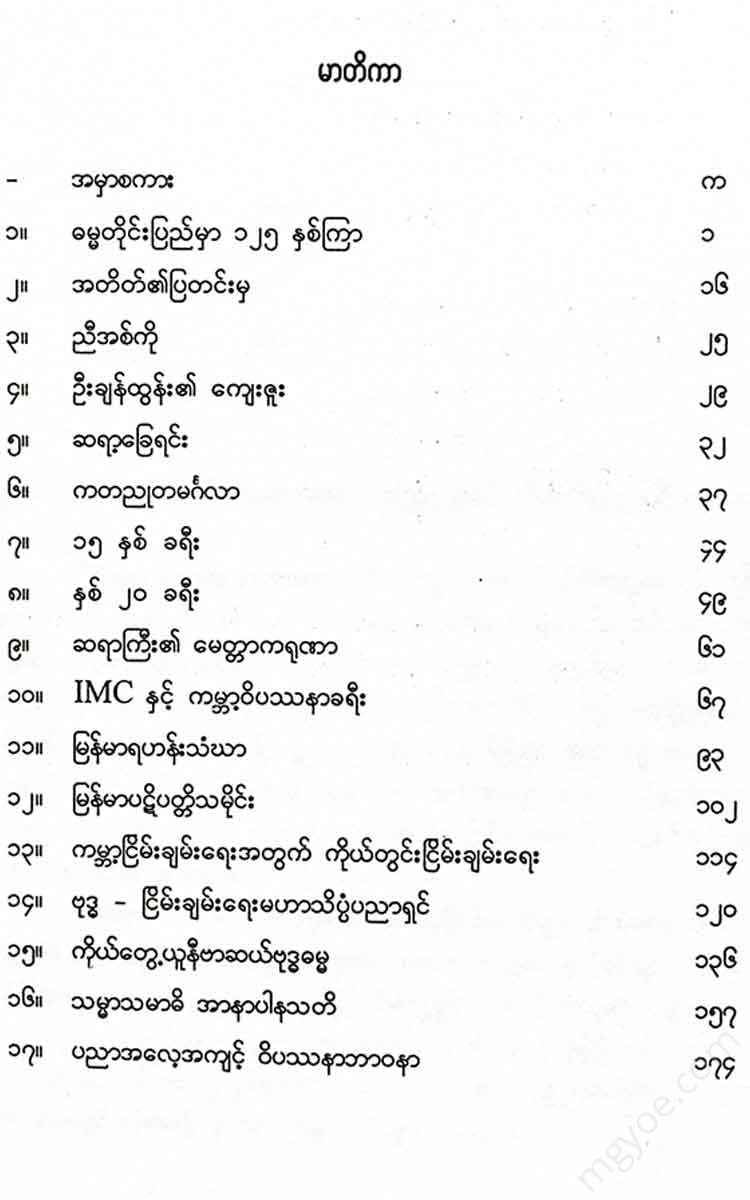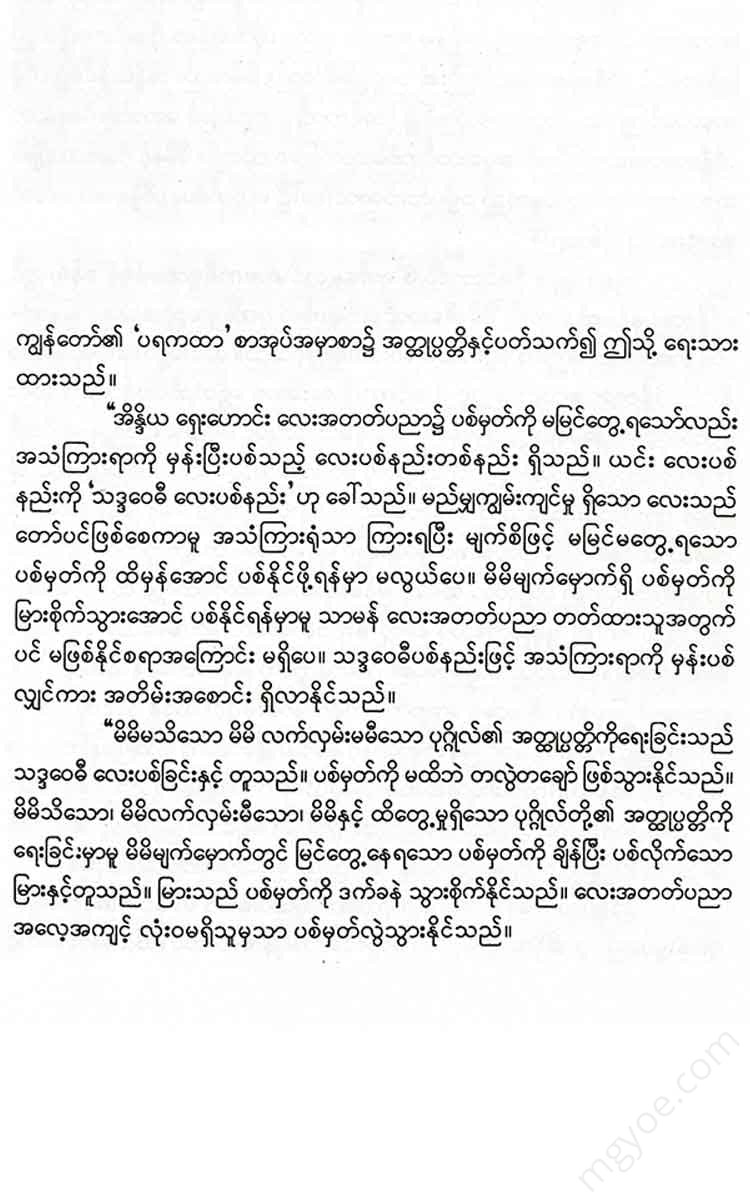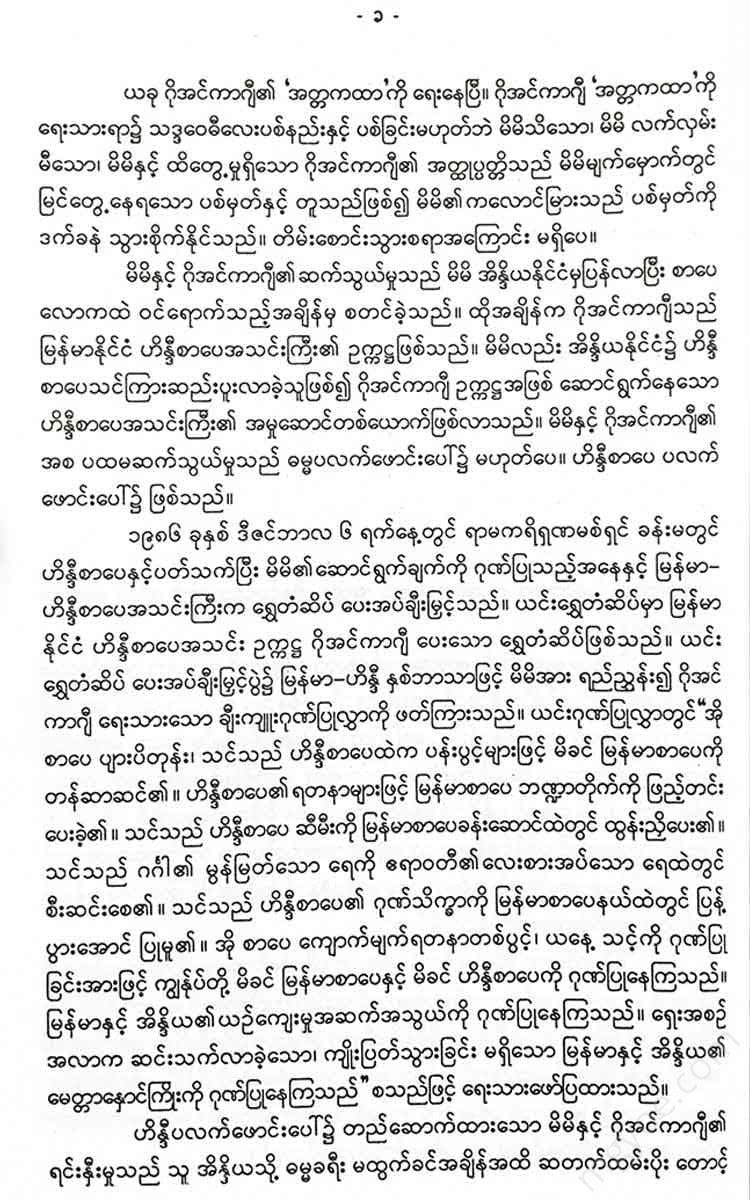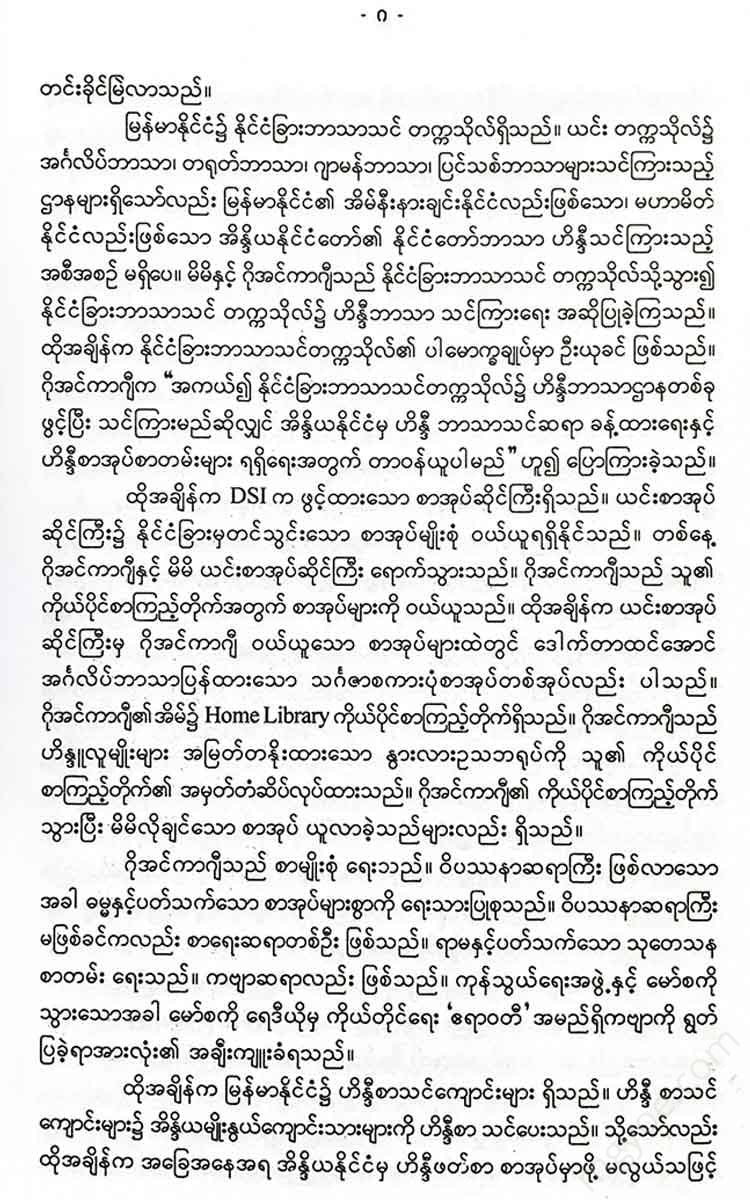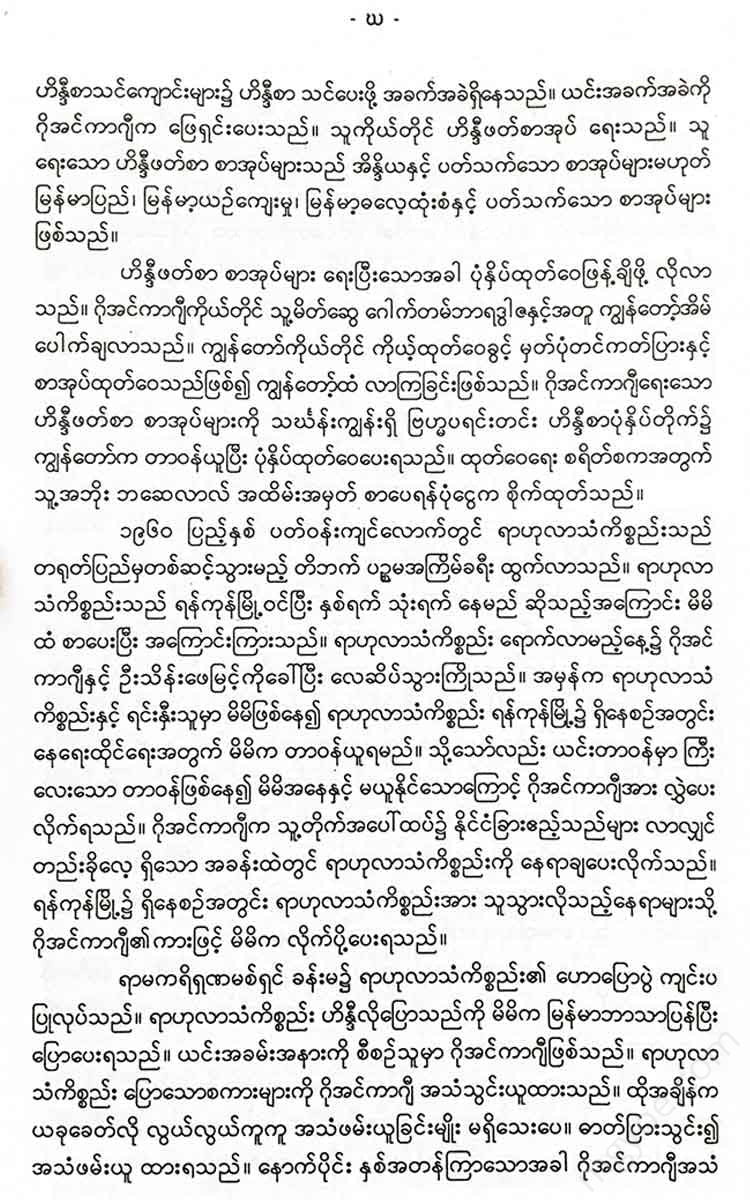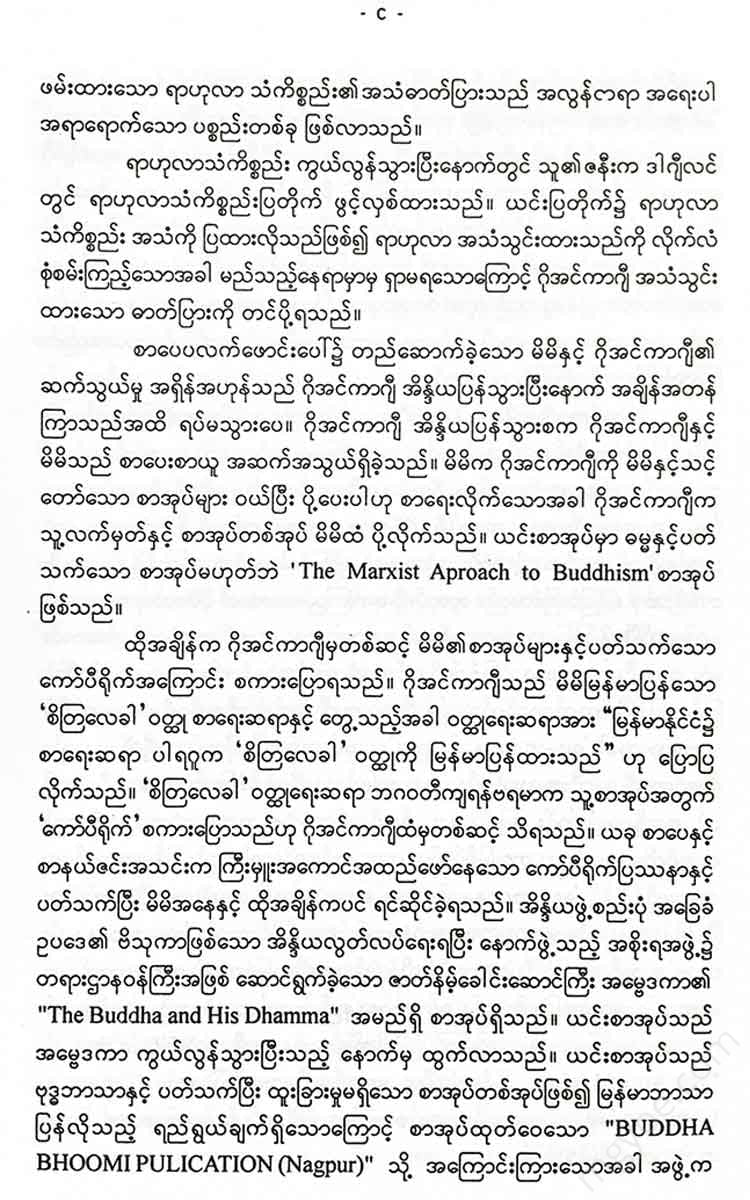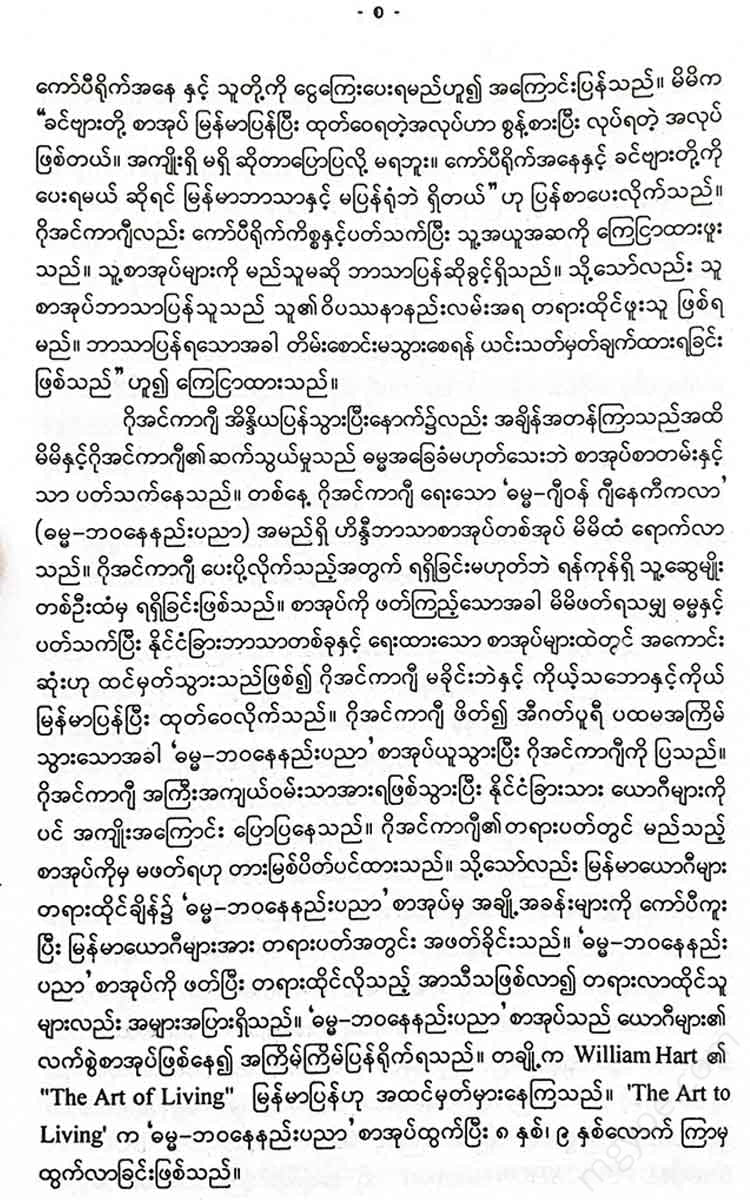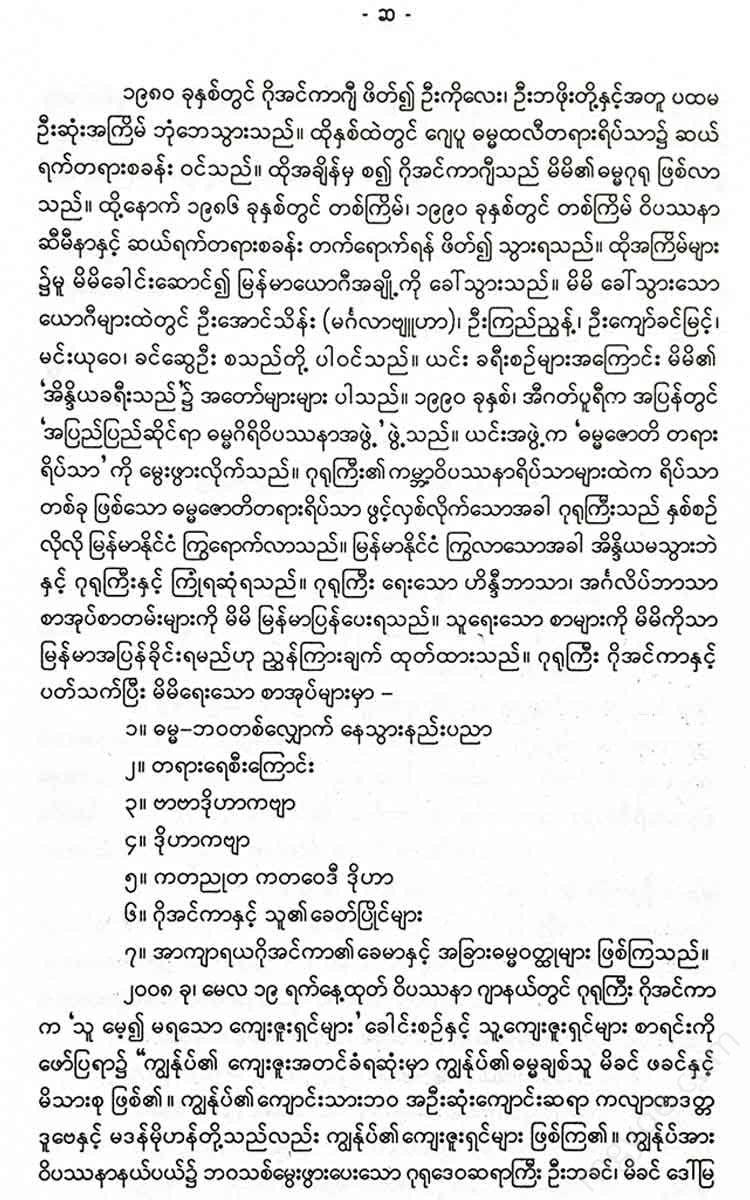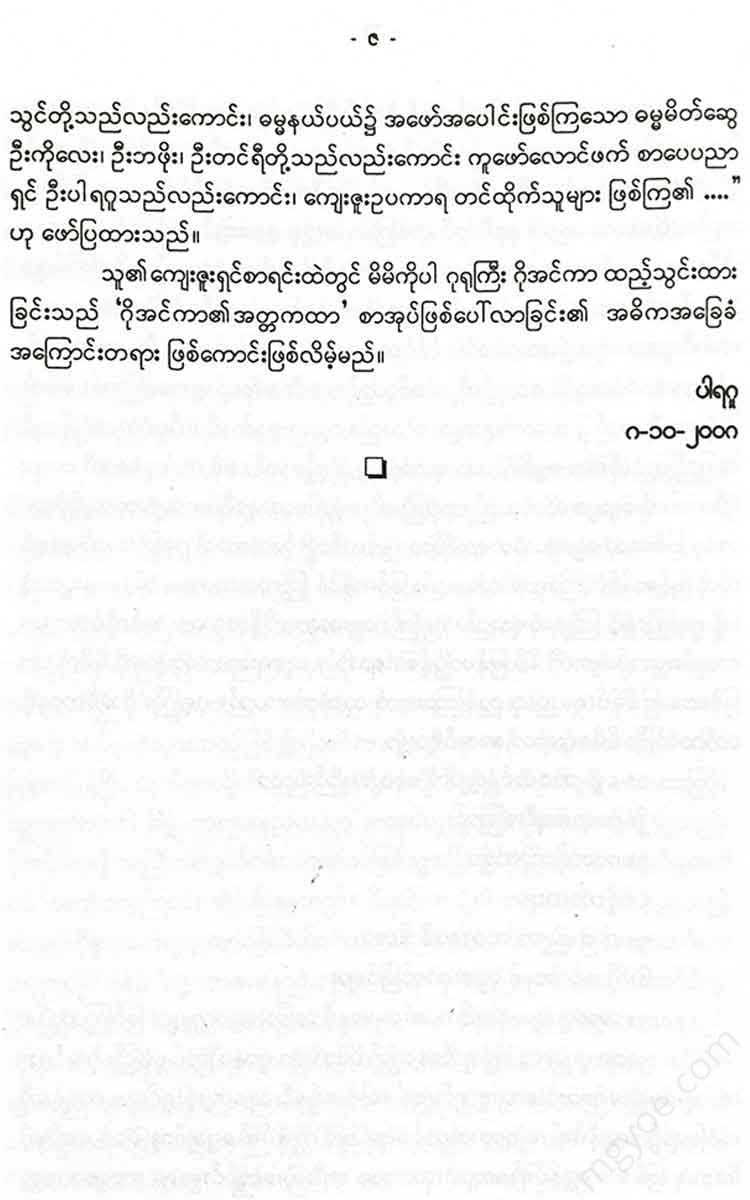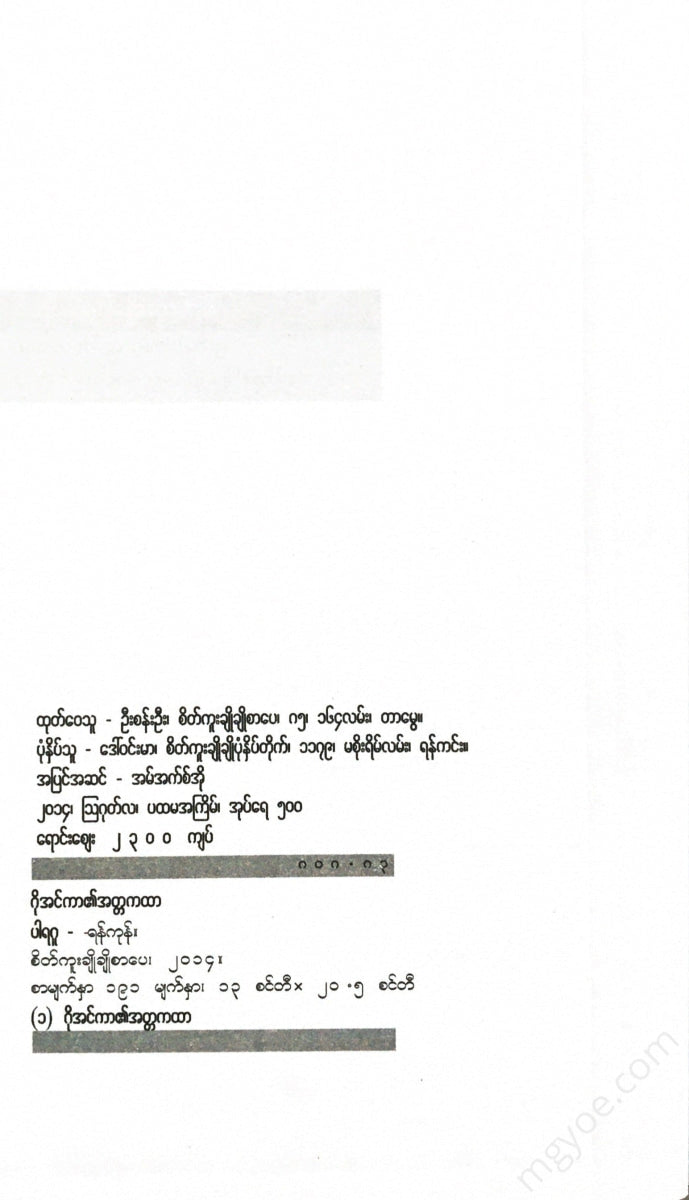စိတ်ကူးချိုချိုစာပေ
Expert - Goenka's autobiography
Expert - Goenka's autobiography
Couldn't load pickup availability
125 years in the Dhamma Country
Looking out the window of the past, a captivating and imaginative landscape rises up on the curtain of my heart.
A historical event that happened over 125 years ago.
An 18-year-old active young man set out from his hometown of Turu in Vikarabad district to travel to a faraway place he had never been before. It was indeed a difficult journey. But his strong determination and determination pushed him forward step by step.
At that time, there was no railway to Kuru. We had to travel on the sandy desert roads, sometimes on foot, sometimes by camel, to reach a railway station in a British colony, a long way from Vikariya.
From that distant railway station, he took a train to Calcutta. This was the young man's first journey. For the first time in his life, he left home and went to a village to earn a living. He arrived in Calcutta. Many people from Turu and Shekhawati near Turu were working in Calcutta. If he had wanted, he could have stayed in Calcutta. However, it seemed that some force was urging the young man to continue his journey. Then he set out on a long journey by sea. The young man had never traveled by train before. He had never traveled by sea. However, with redoubled diligence and firm determination, he embarked on a small sea-going ship, which at that time was very difficult and long, and reached Yangon.
I do not know what kind of business Baba started when he arrived in Myanmar. However, based on what Baba said when he was young, I can guess that he started trading in textiles. He probably bought clothes in Yangon and then went to Mandalay, then Nay Pyi Taw, Myanmar, to sell them. Then, he stopped trading between Yangon and Mandalay and chose another place to trade. At that time, Baba would put the clothes on a horse and travel from Mandalay to Shan State to sell them. At that time, there was a custom in the markets of Shan State to hold market days once a week. Each market day was different. Therefore, Baba would load the goods on the horses and he himself would ride the horse, Walking on the rough, cobblestone roads with horses, they would move from one market to another, selling their wares. It is hard to imagine how much Baba would have suffered in such a trade. Especially how much difficulty he would have faced in obtaining food and drink.
Being a traditional vegetarian, you will probably have to travel with enough food to last you for a month. You will probably only be able to survive on rotis, fried vegetables, and snacks every day. You will also have difficulty finding water to drink.
For drinking water, you will have to untie a long Rajasthani red cloth, tie it to a bucket-shaped rope, and then take some water from the well and drink it by tying it to the copper "lota" cup that you bring with you.
After years of hard work and trading, when his three sons were old enough to work, he opened a small shop in Mandalay and started trading regularly. Gradually, he was able to expand the shop. The small shop became a big shop. The big shop became a bigger shop. Later, when he was able to hand over the trading work to his three sons, Baba retired from work.
Hearing about Baba's difficult journey, my childhood interest in travel was awakened. When the opportunity arose, I wanted to live a nomadic life. That's why. At the age of 12, I set out on my first long journey alone. I left Mandalay and went through the Tshering River to Kalaw, Shan State. My sister stayed at her brother-in-law's house in Kalaw for several days. I would take my sister and return to Mandalay. I took the risk of this journey.
However, I didn't bring my sister's brother-in-law's address because I was inexperienced. Where in Kalaw would I go to find their house? I was looking around the market with my baby in my arms. I knew my sister's brother-in-law's name. However, I didn't see any Indians around that area. Who should I ask? Good luck.
As I was walking along, I saw my sister's brother-in-law buying vegetables in the market, and I recognized him from a distance. Because his big beard helped to distinguish him from other people.
This was my first solo trip. I don't know how many trips I've taken since then. The most difficult one was the terrifying trek I took when I was 18 years old, from Mandalay, through Monywa, Kalaywa, Tamu, and across the Myanmar-India border, through the difficult mountain passes.
My brother Vabulal and I, as the leaders of our family, led the journey. The elderly, including my father, remained behind in Mandalay. After a few days, they followed us to India. We left all our belongings in Burma and came to India.
Then, in search of a business, they traveled to various parts of India, from north to south and from east to west, and finally, in search of their old acquaintance, Rong Karan, they arrived in southern Malabar. With the help of Rong Karan, they started trading in Malabar and achieved success.
After the end of World War II, he returned to Burma from India and became successful in trading.
Therefore, as a merchant, he often traveled not only to Myanmar but also to various countries around the world. Then, when he retired from business and came to the Dharma path, he traveled not only to India but also to various countries around the world, and he was convinced that this Dharma journey would be a journey he would continue for the rest of his life.
This life of travel was inherited from Baba.
For about eight years I lived close to Baba. Every free day Baba would go to the Mahamyat Muni Pagoda. He would take us (my brother Babulal and me). At first we would go by tram. The journey by tram from Mandalay Market to Shan Su was very interesting and enjoyable. There was a large hall in the Mahamyat Muni Pagoda complex. It was very fun to run around and jump and play in this hall. However, Baba told us that this temple was built for the worship of Mahamyat Muni Pagoda. No shouting or noise was allowed inside the temple complex.
Then a third interesting thing came up. They walked around the Buddha Gandhakuti three times, silently, and sat down near Baba. Baba sat cross-legged in front of the main image, the Mahamyat Muni, and sat there without speaking, with his eyes closed. I don't remember how long Baba sat like this. But I guessed it was about half an hour.
I don't know how Baba meditates. At first, after sitting near Baba for 5 or 6 minutes, I got bored and quietly got up and went outside. But gradually, I closed my eyes and enjoyed sitting with Baba. There was peace and tranquility all around.
I liked this situation. I sat with Baba the whole time. In the surrounding area, many people were sitting like this with their eyes closed. Some of them were praying. Baba was praying. Some were quietly chanting Dhamma mantras.
Baba did not chant any Dhamma mantras. He just sat quietly. We also liked to sit quietly like that. In Mandalay, there is a Narayana temple, about 10 minutes walk from our house. In the temple hall, there are idols of Krishna and Radha. In a nearby room, there is an idol of Shiva. Baba never went to that temple. But we went to that temple many times with our father.
It is particularly interesting that during the month of Vaikuntha, the devotees of Lord Shiva gather. It is very interesting to see the Krishna temple decorated with hammocks and dances during the month of Vaikuntha. Baba is not seen attending these festivals either.
Compared to the purity of the great sage Muni Tansang,
